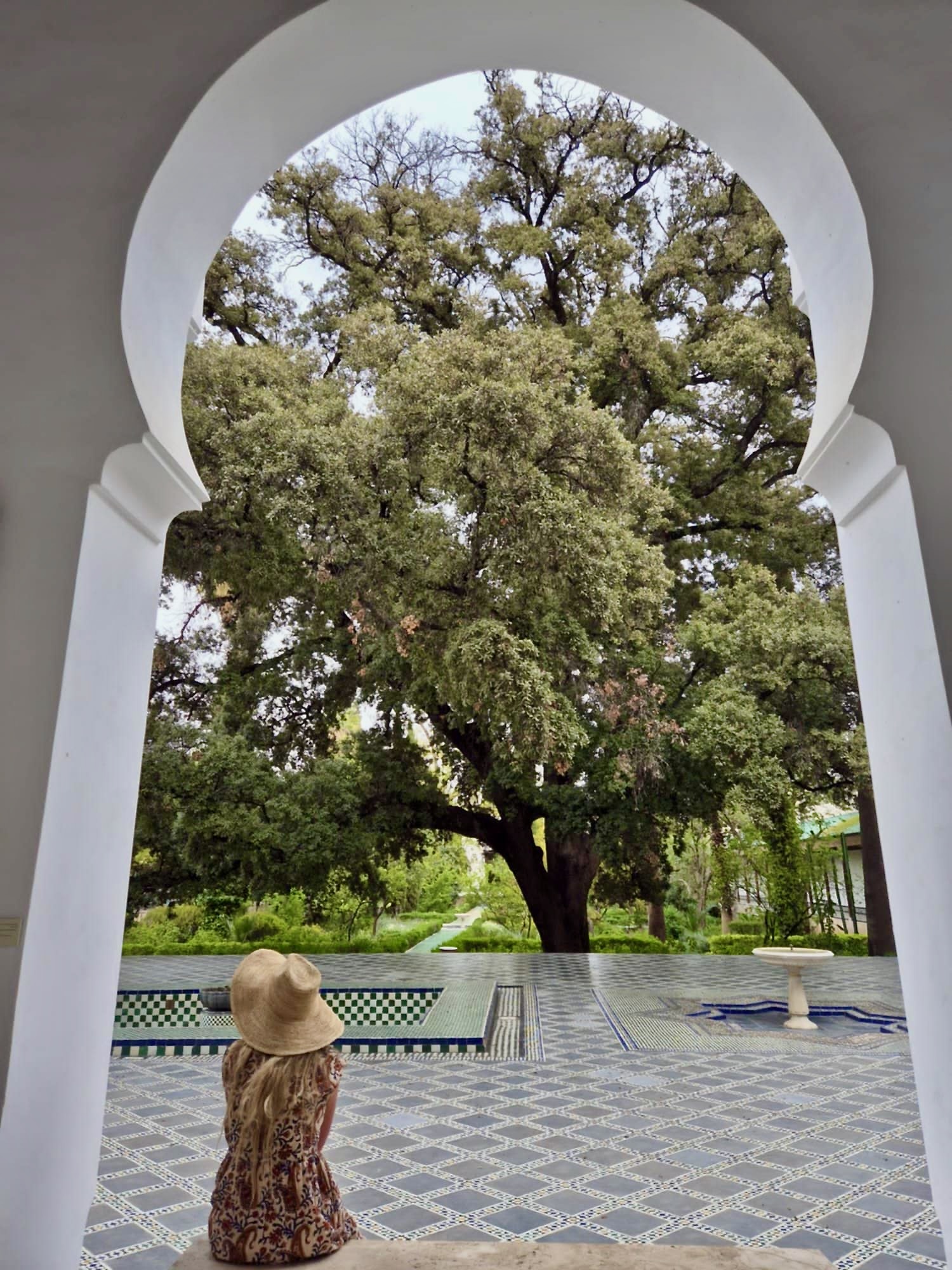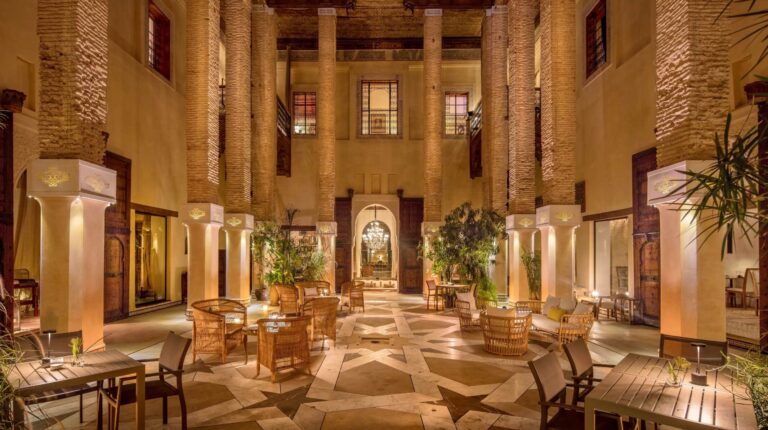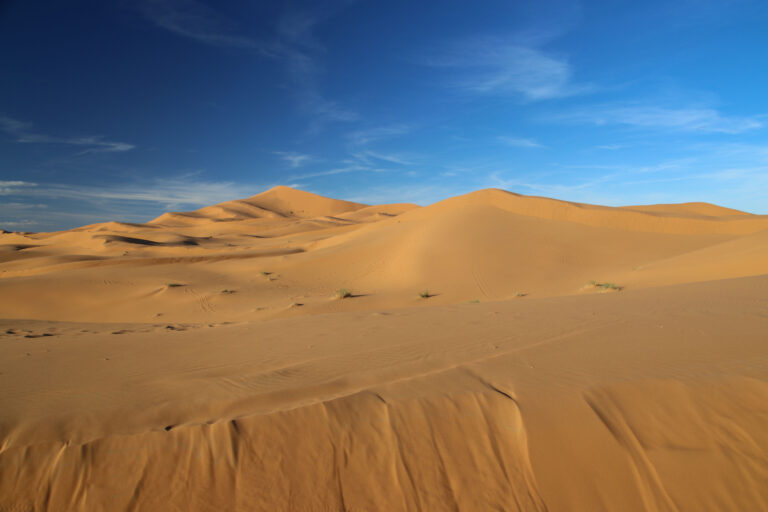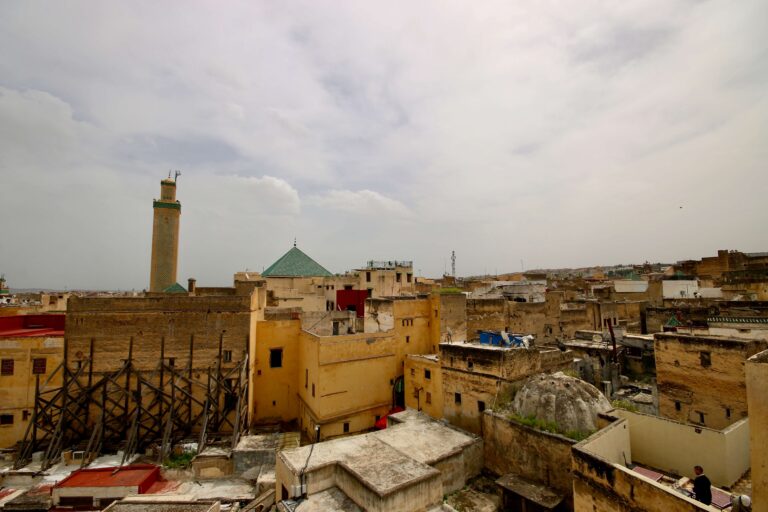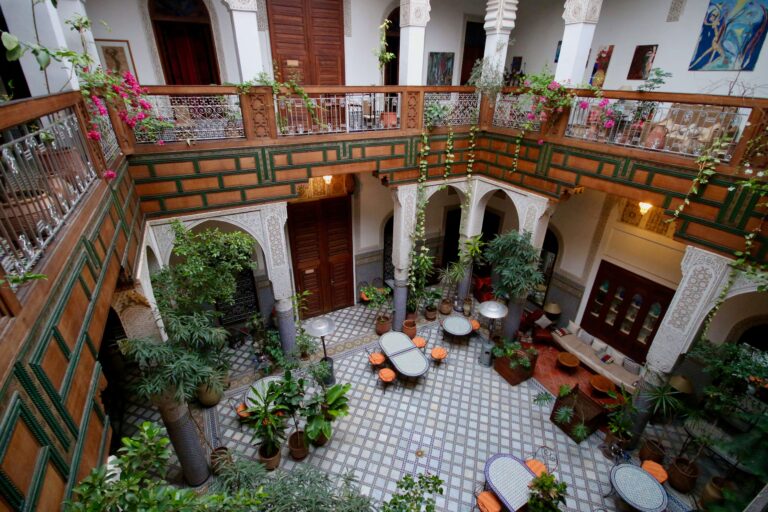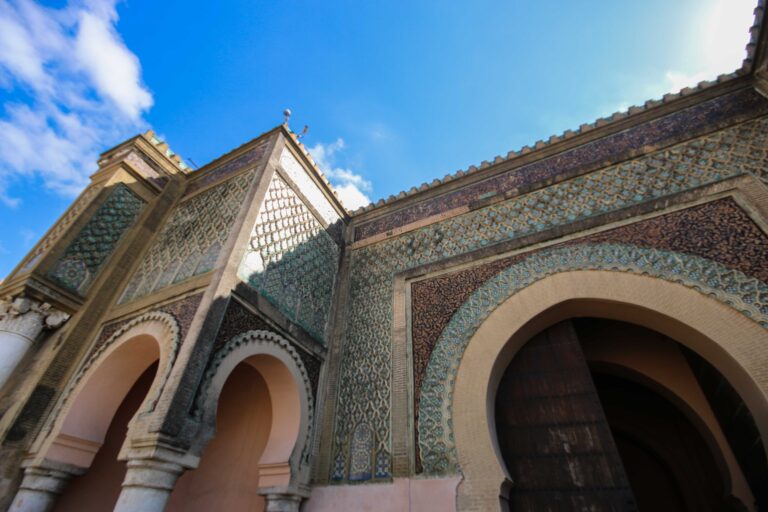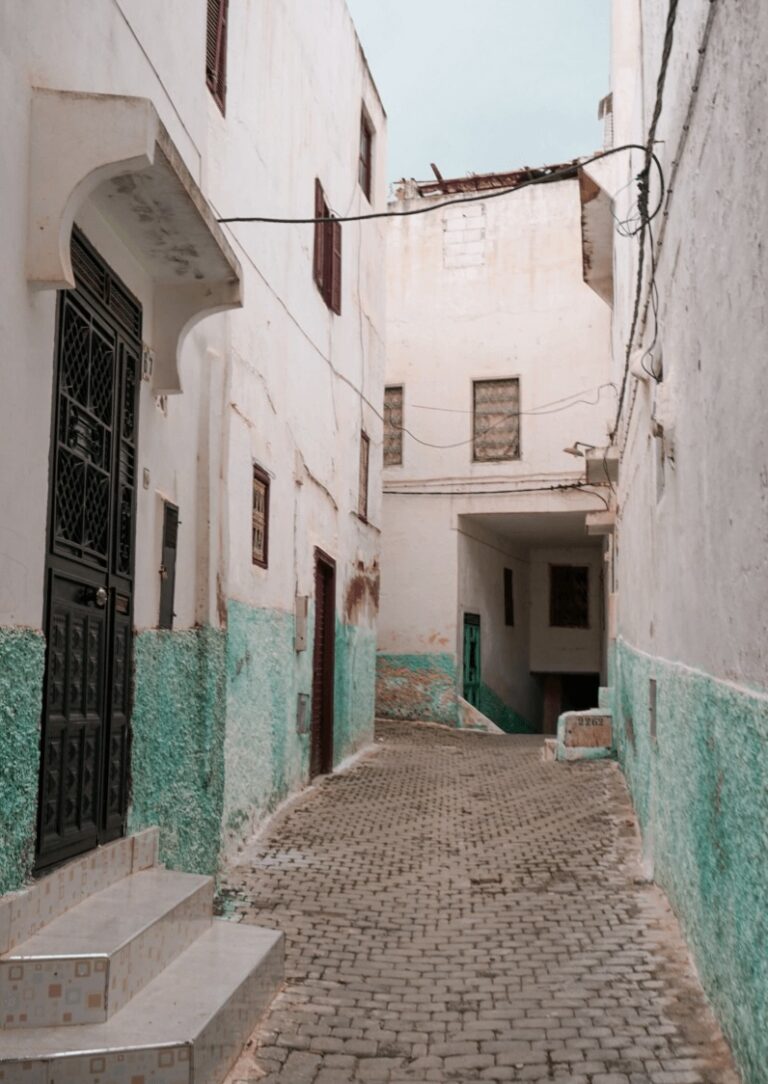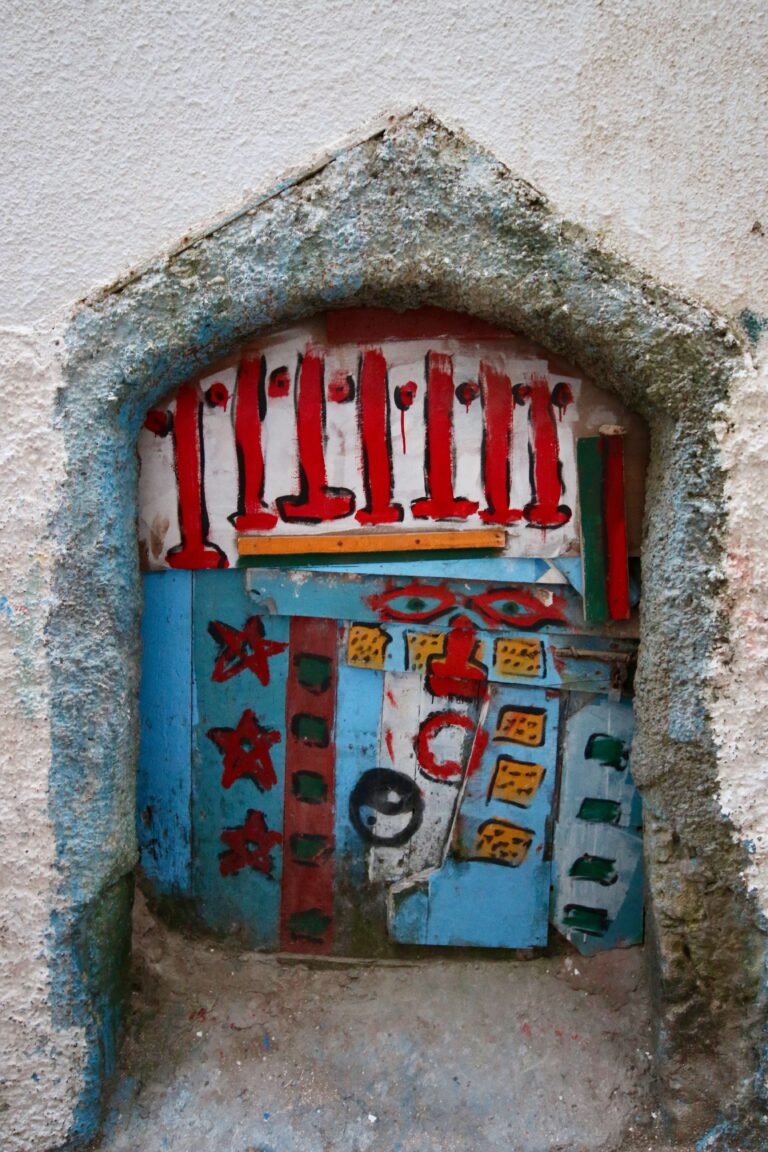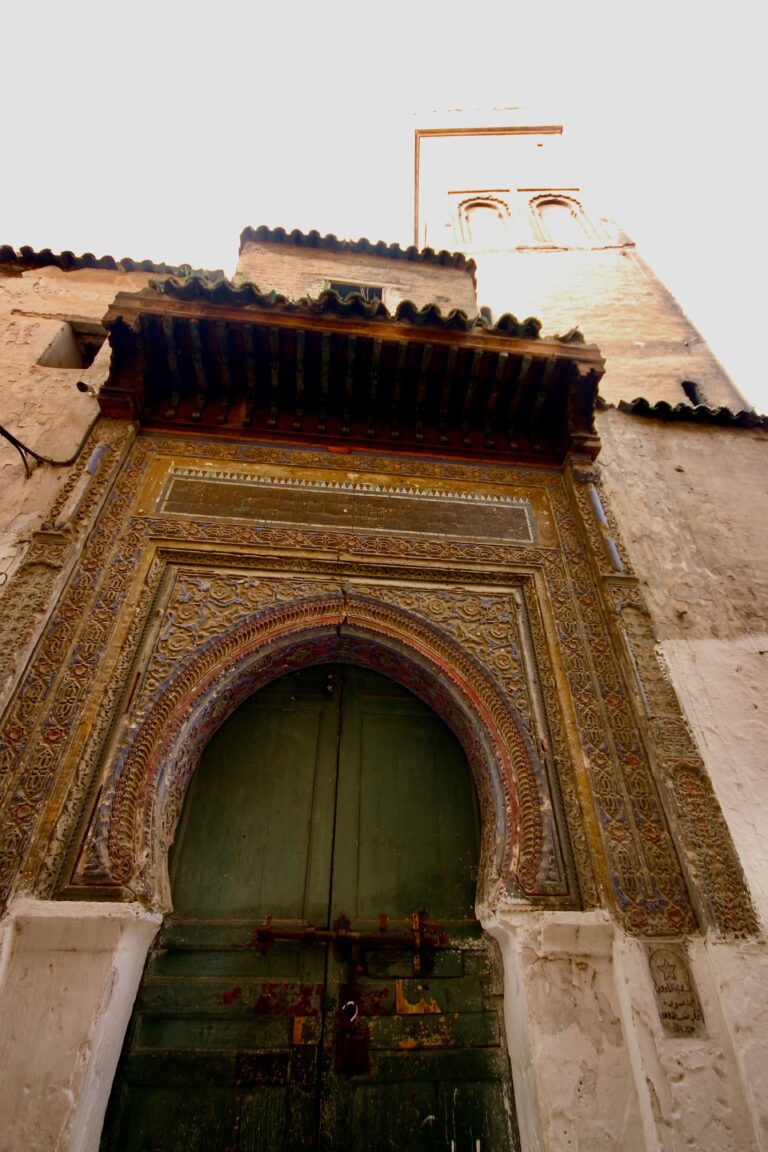Dar Batha: A Newly Reopened Museum of Islamic Arts in Fes
I’m just going to come out and say it. I think Dar Batha is one of the best museums in Morocco and certainly one of my favourites! But if you search for it online at TripAdvisor (where it currently has a review score of 3.7 out of 5), you might question if it’s worth visiting.
I visited Dar Batha in April 2025, shortly after it reopened following extensive restoration works. I dare say it now offers a completely different experience from what earlier reviewers suggest.
Not only is the renovated palace complex stunning. But the exhibits are really engaging for anyone interested in Islamic arts, Moroccan crafts and ethnography in general.
Commissioned by Sultan Hassan I of the Alaouite dynasty in the late 19th century (and finished under his successor Abdelaziz), Dar Batha really does showcase Morocco’s architectural and artistic excellence.
It boasts an impressive collection of more than 6,500 historical artefacts and crafts, all of which are beautifully presented in the restored gallery spaces.
In this article, I’ll detail everything you need to know about visiting the Dar Batha Museum of Islamic Arts. It includes what you can expect to see, entrance costs and opening hours.
For more information about things to see and do in Fes, check out my detailed travel guide here.
Opening hours of Dar Batha Museum of Islamic Arts: 10 am to 6 pm (closed Tuesdays)
Entrance fee for Dar Batha Museum of Islamic Arts: 60 dh
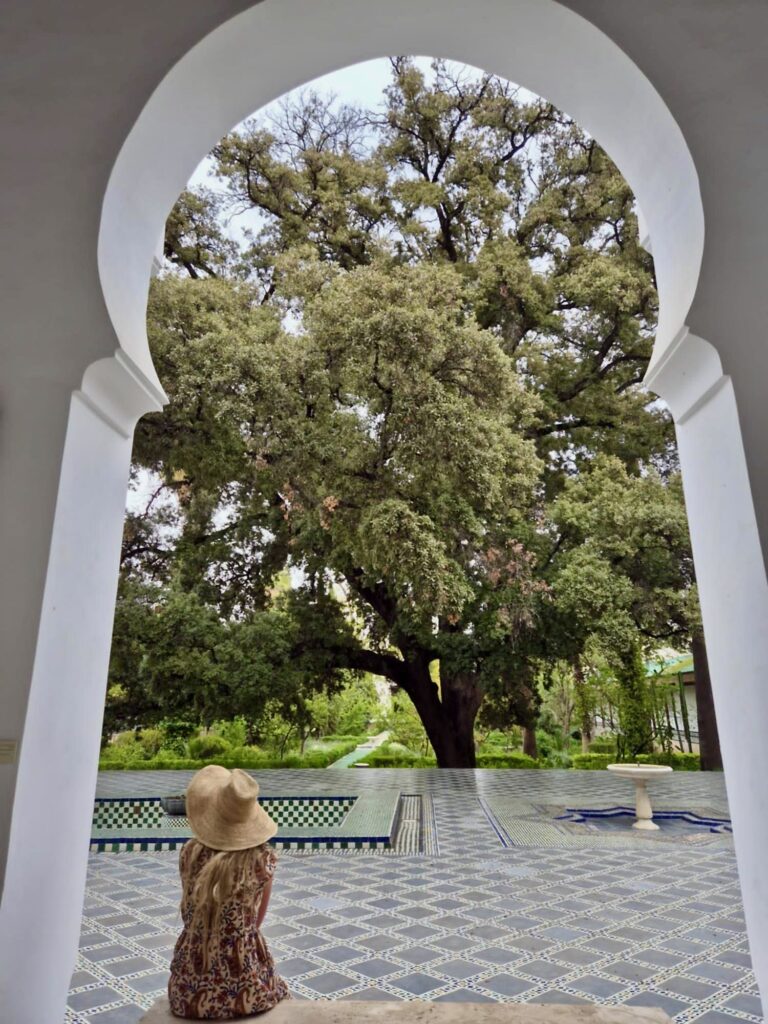
Disclosure: This article contains affiliate links, meaning I earn a small commission when you make a purchase. Affiliate links cost you nothing and ensure my content stays free!
A brief history of Dar Batha
Together with neighbouring Dar el-Beida, Dar Batha was designed as a summer palace and a residence for high-profile guests and dignitaries. Its construction was initiated in the late 19th century under the commission of Moulay Hassan I. Further enhancements were made by his successor, Moulay Abdelaziz, who ruled from 1894 to 1908.
Historical records suggest that the construction of Dar Batha took place between 1886 and 1907, a period of more than 20 years. The adjacent Dar el-Beida was completed by Sultan Abdelhafid, the last independent sultan of Morocco, during his reign from 1909 to 1912.
Following the establishment of the French Protectorate in 1912, both palaces were repurposed to accommodate the offices of the Resident-General. Three years later, Dar Batha was transformed into a museum dedicated to Moroccan arts. Eventually, it evolved to include ethnographical displays.
The restoration of Dar Batha
In 2016, an initiative was launched to renovate several museums across Morocco, including the Dar Batha Museum. Renovation efforts commenced in April 2019, with an estimated budget of 15.6 million Moroccan dirhams (that’s around 1.7 million USD) allocated for the project!
The goal was to transform the palace into a “Museum of Islamic Arts” and enhance its existing cultural offerings. After several years of restoration (and closure), Dar Batha reopened to the public in early 2025, marking a new chapter.
If you’re looking for a Fes hotel with a hamman, you’ll find some of my top recommendations here.

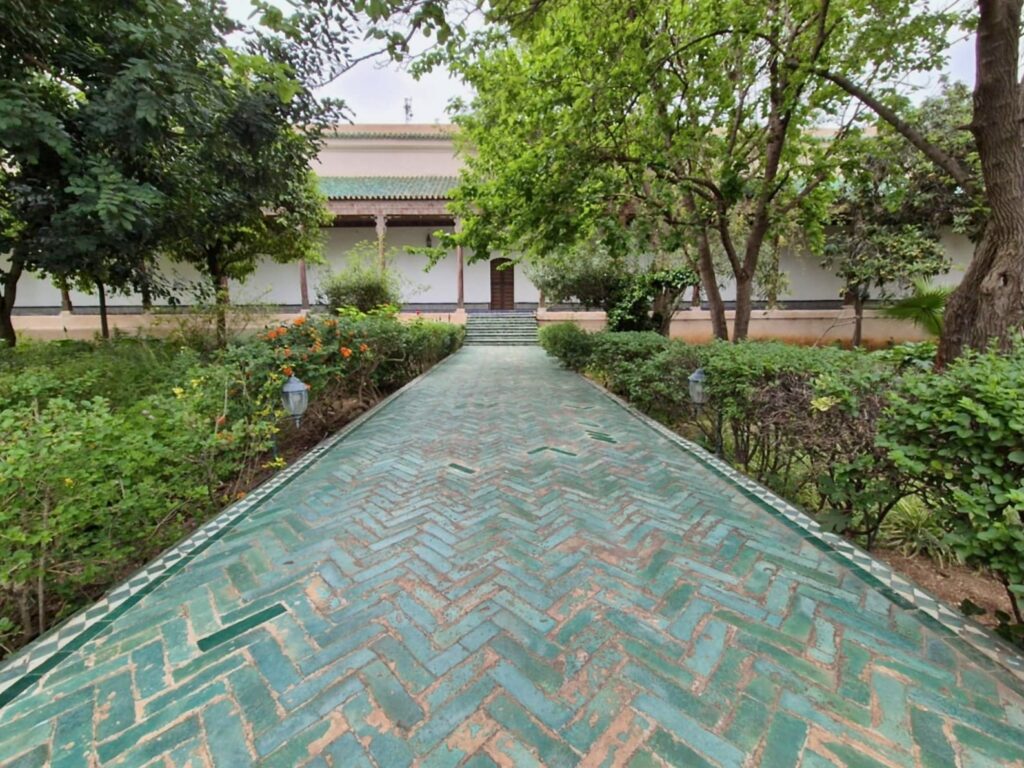
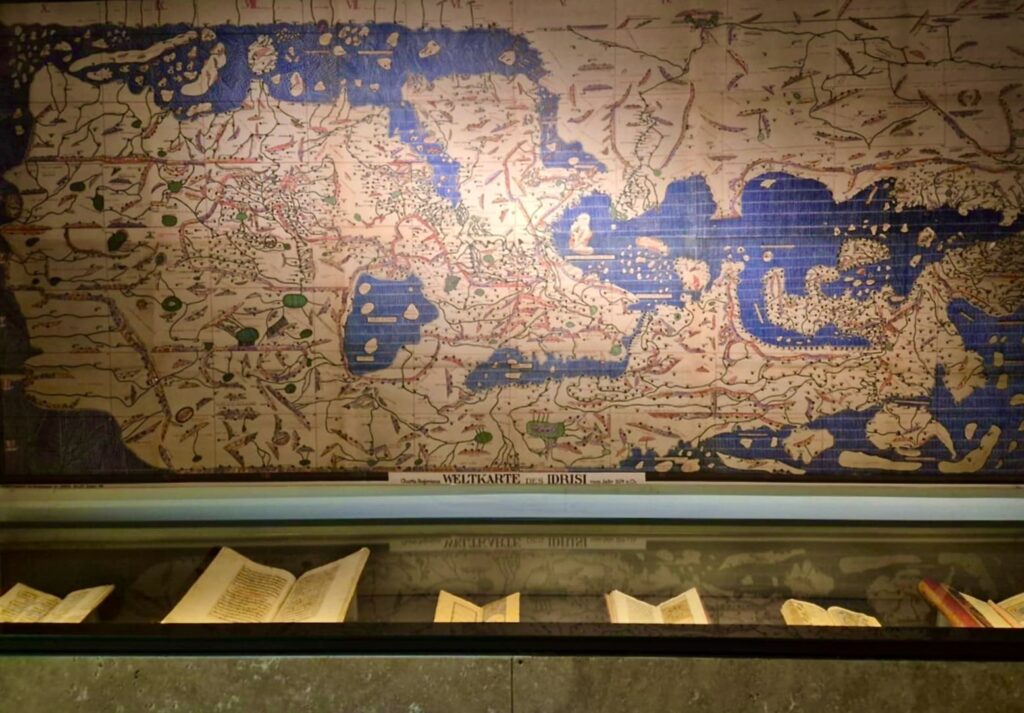
Dar Batha’s architecture and Andalusian garden
Designed in an Arab-Andalusian style, Dar Batha centres around an expansive rectangular courtyard that serves as the focal point of the structure. This courtyard is framed by galleries, with the two principal wings of the building positioned at its eastern and western ends (this is where the majority of the exhibits are housed).
The flooring of the courtyard is adorned with zellige mosaic tilework, which beautifully complements the ornamental fountains. The galleries flanking the courtyard’s east and west sides feature impressive horseshoe arches crafted from brick. Those along the north and south sides are constructed from elaborately painted wood.
At the centre is Dar Batha’s Andalusian-style garden, which embodies a classic riad design. It was envisioned by landscape architect Jean-Claude Nicolas Forestier in 1915. It is divided into four sections by two central axes. In its middle is a large fountain surrounded by zellige tiles.
The garden occupies more than half of the palace’s total footprint and is planted with towering palms, jacarandas and hibiscus plants. Plus, there’s a really impressive oak tree.
Today, the garden serves as a venue for concerts and religious festivals, as well as being a wonderful place to relax while visiting the museum.
In addition to Dar Batha, Fes is home to several other fantastic museums. Discover 7 of the city’s best here.
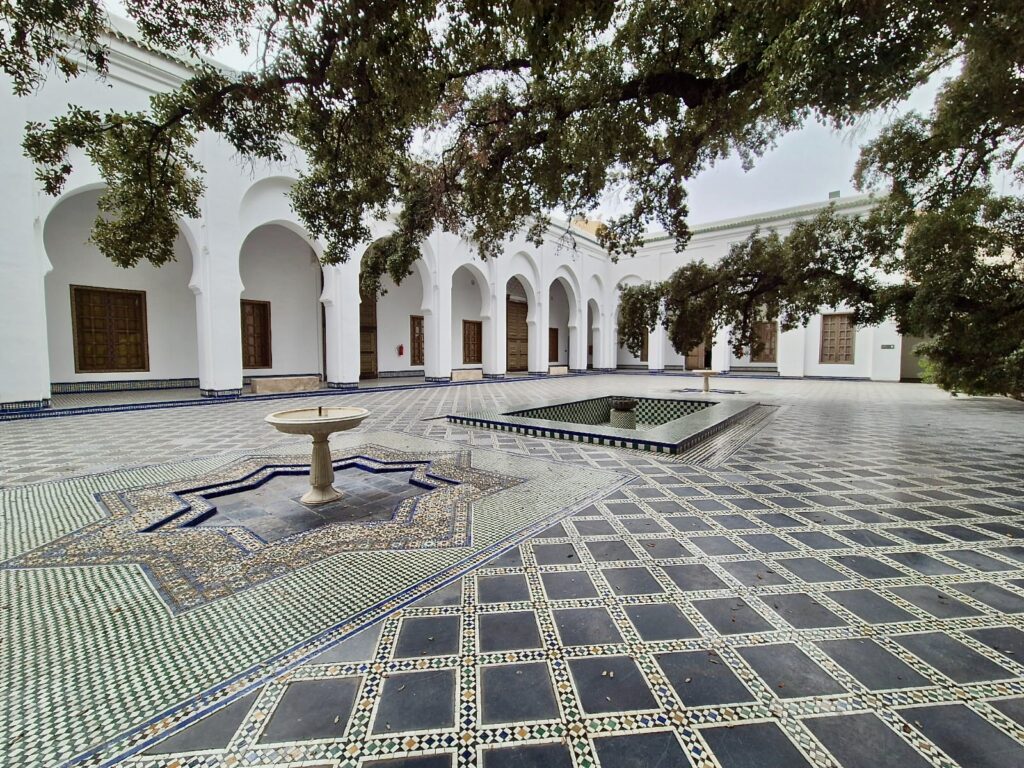
What to expect at Dar Batha Museum of Islamic Arts
Dar Batha is located near Bab Boujloud. This magnificent gate that serves as the northwestern entrance to Fes el-Bali. As mentioned above, the museum lies adjacent to Dar el-Beida, another palace (and active royal residence) that once formed part of the same complex.
After entering the museum, you’ll arrive at the reception area. Here, you can purchase tickets (60 DH) and find information about the building’s layout. The staff here were really friendly and spoke great English! On the right-hand side will be a museum store, although this wasn’t yet open during my visit in April 2025.
Top tip:
It’s worth mentioning that you can’t take photos with cameras in the museum (the staff told me as soon as they saw my DSLR). However, you are permitted to take photos with your phone.
If you have a camera with you, I don’t think anyone will confiscate it at the entrance. But I’d suggest keeping it stored away in a bag for the duration of your visit.
There are staff members in each of the galleries to ensure nobody damages the exhibits and I think they’re probably there to monitor camera usage too.
I just want to say that the reception team was really polite about asking me not to use my camera and apologised about the no-camera rule. They understand it can be frustrating…but rules are rules!
So to be clear – all of the photos in this post were taken using a phone (my friend’s to be exact as mine takes terrible photos!)
If you only have one day to explore Fes, you can find my suggested itinerary here, which includes a visit to Dar Batha Museum.

After you pay the entrance fee, you arrive in the central courtyard. I’m pretty sure I audibly gasped when I stepped inside, it is THAT beautiful!
To the left is the first gallery, which has a timeline of Moroccan history. It details the successive dynasties and rulers that have left their mark on this corner of the Maghreb.
Local insight:
I found this timeline really useful, as I often struggle to keep track of who was ruling where during different historical periods. Also on display are various artefacts relevant to each period. So it’s visually engaging as well as containing a lot of information (in Darija, English and French).
From here, you can continue clockwise through Dar Batha’s galleries, each of which has a different focus. In total, there are around 6,500 archaeological and historical artefacts on display. Many of these have been sourced from madrasas and mosques within the Fes medina.
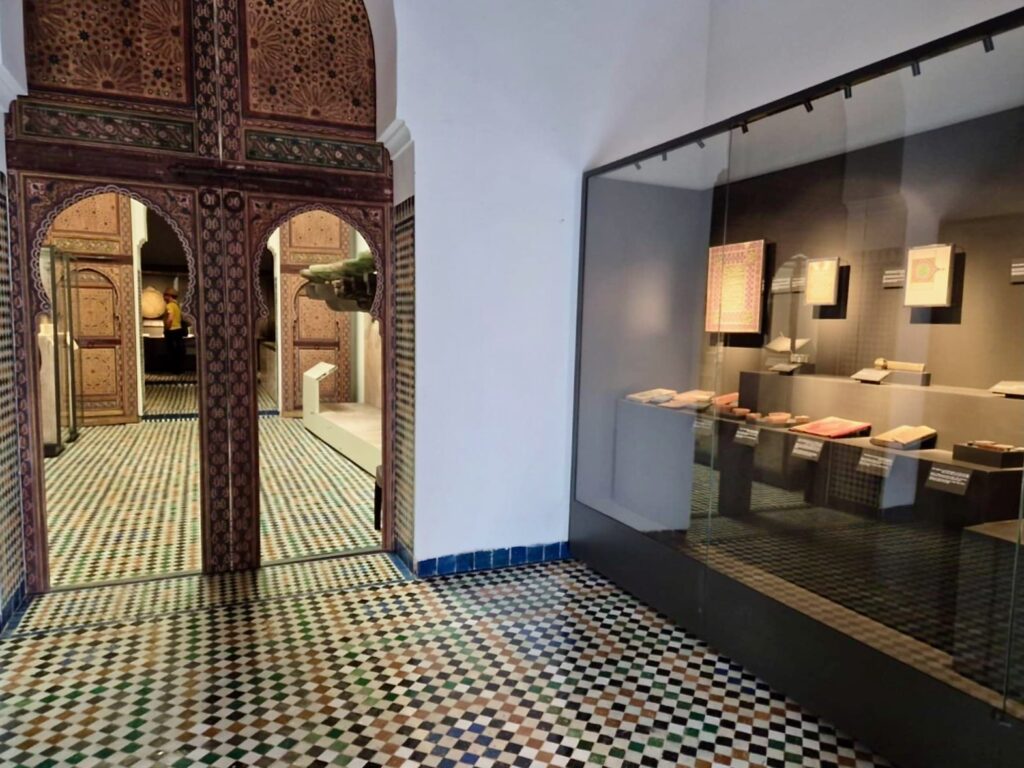
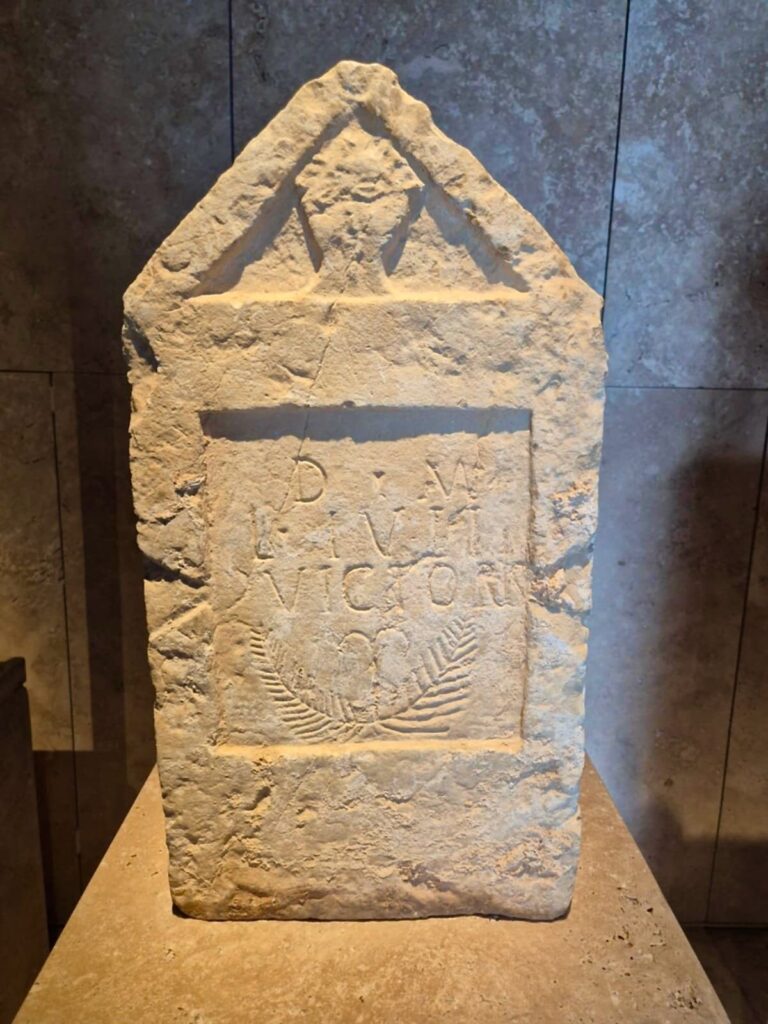
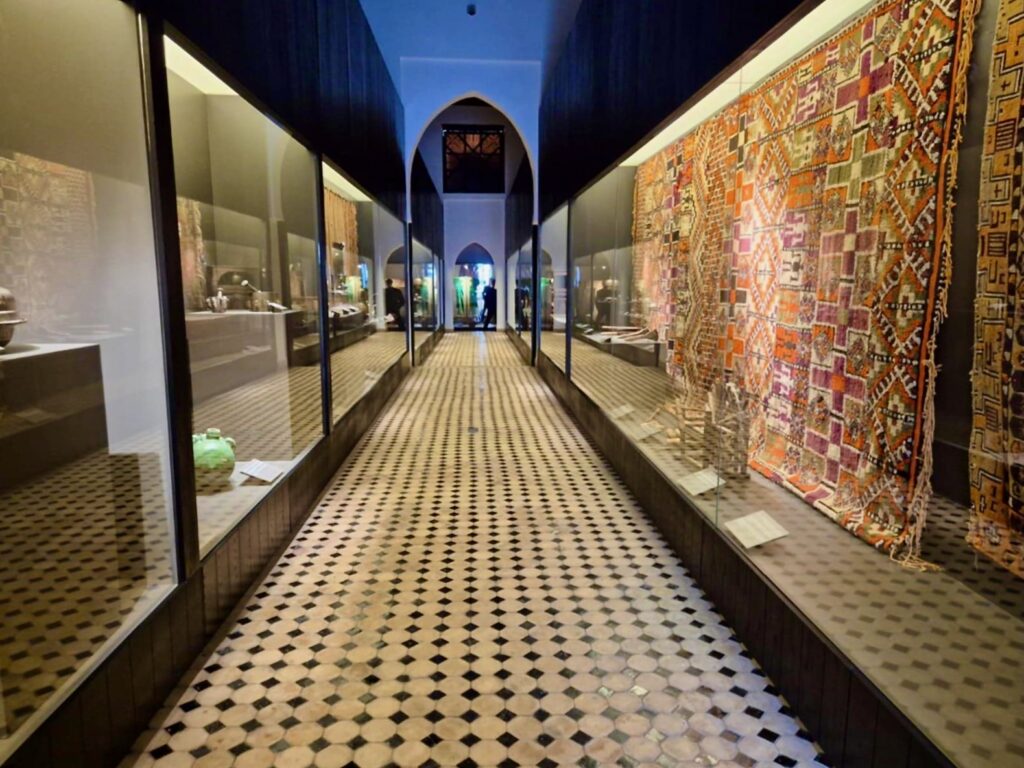
Among the most significant pieces are some of the oldest artefacts in Fes. These include architectural remnants from the Idrisid period and the remains of a 9th-century minbar (a pulpit with a staircase) from the Andalusian Mosque.
Created under both Fatimid and Andalusian Umayyad rulers, this mosque is located in the far east of the medina on the other side of the Oued Bou Khrareb.
Top tip
Whenever you need a break from browsing the exhibits or your brain becomes too full of information, you can retreat to the courtyard and its gorgeous garden. The atmosphere is really peaceful and it provides a welcome respite from the hustle of the medina outside. I could honestly sit here for ages!
Additionally, the museum is home to a 14th-century minbar from the Bou Inania Madrasa. It’s one of several magnificent madrasas in the city and one of the few that functioned not only as an Islamic school but also as a congregational mosque.
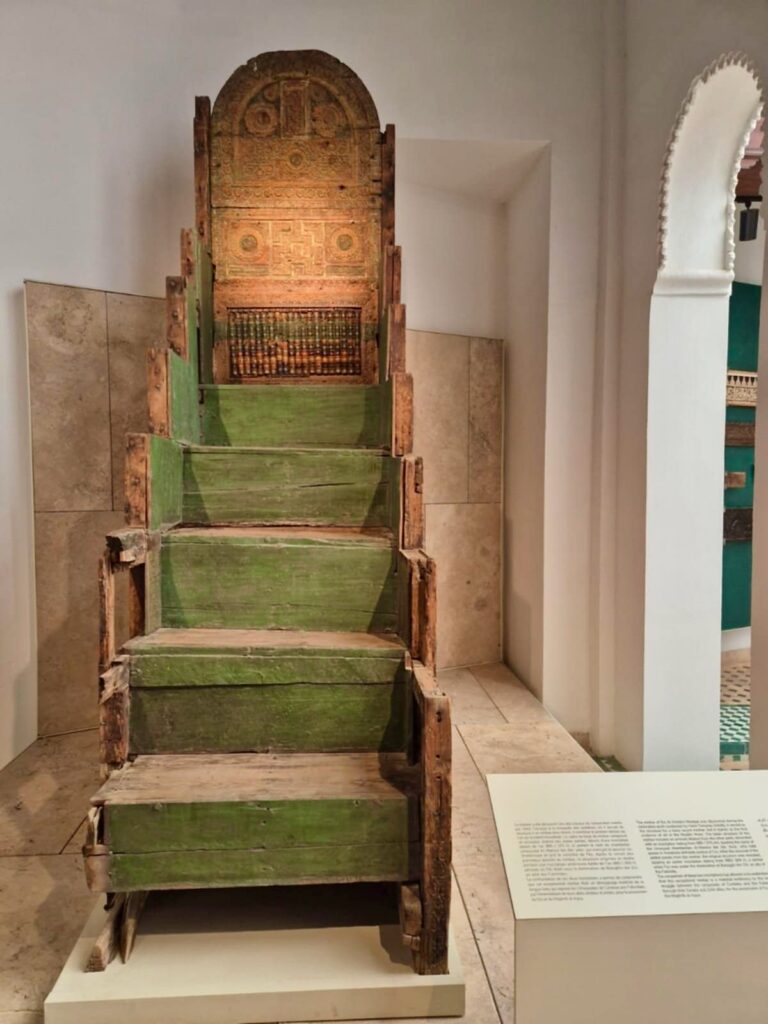
Dar Batha’s impressive collection includes historic Qurans, astrolabes and musical instruments, as well as Amazigh carpets, traditional costumes and jewellery.
A highlight is the ceramics collection. It’s often regarded as one of the oldest and most impressive in the Arab world. Several pieces trace their origins back to the early 14th century and exhibit the distinctive “blue” style of Fes.
The museum’s exhibits are organised thematically and come complete with detailed information in Darija, English and French. This allows you to better appreciate the connections between the artefacts on display and their significance to Moroccan culture.
I particularly love that there are videos illustrating modern masters practicing some of these historic crafts. It shows they are well and truly still alive!
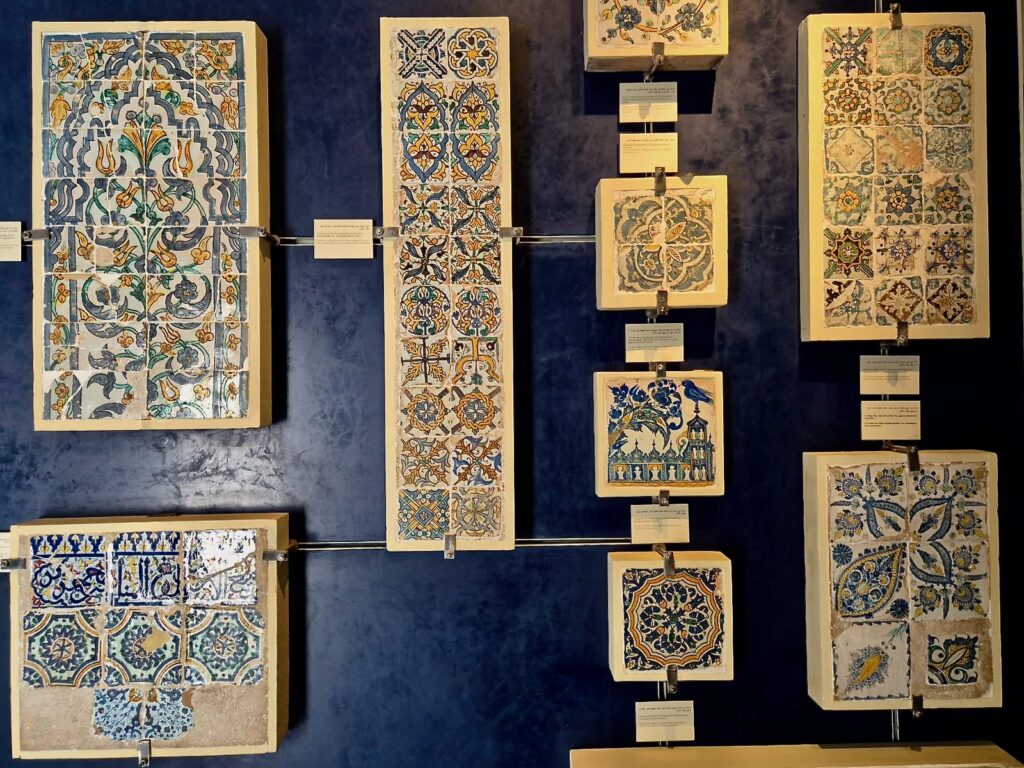
How long do you need to explore Dar Batha?
I’d suggest allowing at least an hour and a half to explore Dar Batha Museum. Although you could easily spend two or three if you’re someone who loves to read everything (like me!)
While the exhibition galleries are quite dark, the artefacts and information are well lit. This allows you to really appreciate the detailing that has gone into many of the objects.
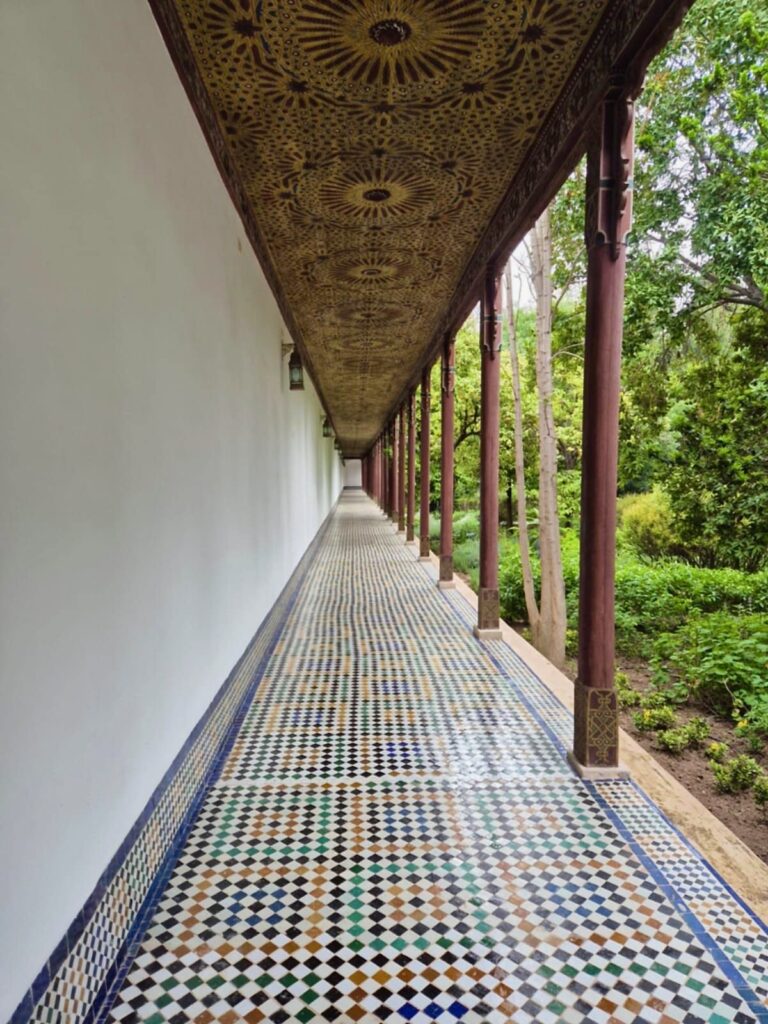
Is Dar Batha Museum worth visiting?
During my visit to Dar Batha, the museum was relatively quiet, despite there being a lot of tourists wandering the medina outside. I think this might be because word is yet to get out about how fantastic this museum is. Or people are put off by the TripAdvisor reviews!
If you are using online reviews to make a decision about whether to visit Dar Batha or not, I’d suggest only looking at those posted after its reopening in 2025.
Entrance to the Dar Batha Museum of Islamic Arts costs 60 DH. Personally, I think this is a fair price when you consider how much there is to see and the quality of the restoration.
It’s open from 10 am to 6 pm daily and closed on Tuesdays. So plan your itinerary accordingly if visiting Dar Batha is something you really want to do!

PLAN YOUR TRIP WITH MY FAVOURITE RESOURCES:
Find hotels via Booking
Book tours and attractions via Viator or GetYourGuide
Find a rental car via Discover Cars
Book flights via Kiwi or Booking
Search for buses and trains via 12Go or Omio
Get travel insurance via SafetyWing
Buy a digital eSIM with Airalo
By purchasing through my links, you’ll be supporting my website at no additional cost to you

About Me
I’m Malika, a global traveller who first visited Morocco in 2014 before marrying a local and settling down in a little village on the Atlantic coast. Over the years, I’ve developed an intense love for Morocco, its incredible landscapes, storied cities and the exceptionally generous hospitality of its people.
Malika in Morocco is a place to share my years of experience exploring the country, from north to south and from the Atlantic Ocean to the Sahara Desert. As a resource for travellers visiting Morocco, I want to encourage others to experience this captivating destination the way they desire, whether that’s independently or under the expert guidance of local tour operators.
I believe strongly in supporting responsible and sustainable tourism initiatives while inspiring travel experiences that are life-impacting and mutually beneficial for both travellers and locals.
-
8 Best Luxury Hotels in Fes: Morocco’s “Cultural Capital”
Looking for the best luxury hotels in Fes? Explore this curated collection of high-end stays, including beautifully restored riads and modern retreats. Hidden gems and historic treasures await in Fes, Morocco’s cultural capital. Stays here are all about wandering through the maze-like medieval medina, uncovering artisanal wares in the souks and marvelling at the centuries-old…
-
4 Unforgettable Tours to the Sahara Desert from Fes
Looking for the best tours to the Sahara Desert from Fes? Explore this curated collection of multi-day trips, including budget-friendly small group adventures and private desert tours in Morocco. If there’s one experience that’s high on many travellers’ lists when visiting Morocco, it’s spending a night in the Sahara Desert. Having been lucky enough to…
-
5 Best Food Tours and Experiences in Fes: Home of Fassi Cusine
Looking for the best food tours in Fes or foodie-related experiences? Discover five incredible ways to experience Fassi cuisine and culture in one of Morocco’s oldest cities. Home to one of the world’s oldest cuisines, Morocco is a deservedly popular destination for foodies. It’s also a destination I’ve been lucky enough to eat my way…
-
11 Highly-Rated Riads in Fes: Morocco’s “Cultural Capital”
Looking for the best riads in Fes? Discover 11 inspiring places to stay in this ancient city, all of which abound with the charm of traditional Moroccan residences. Fes is one of Morocco’s most storied cities, with a history stretching back to the 8th century. It’s an incredible place to visit, not only for its…
-
An Imperial Gem: Essential Travel Guide to Meknes
Looking for the best things to do in Meknes or highly recommended places to stay? Discover the ideal time to visit, tips for getting around and the best tours in this essential travel guide to Meknes. Located less than an hour’s drive from Fes, Meknes is often overlooked by travellers, despite its historical significance as the…
-
A Holy Town: Essential Travel Guide to Moulay Idriss Zerhoun
Looking for the best things to do in Moulay Idriss Zerhoun or highly recommended places to stay? Discover the ideal time to visit, tips for getting around and the best tours in this essential travel guide to Moulay Idriss Zerhoun. Perched dramatically on the slopes of the Khyber and Tazga hills, Moulay Idriss Zerhoun is…
